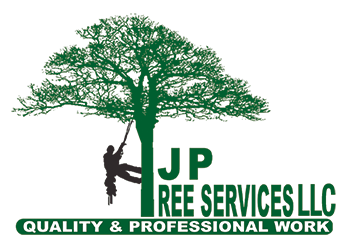J Perez Tree
Services LLC Blog
J P Tree Services LLC Blog
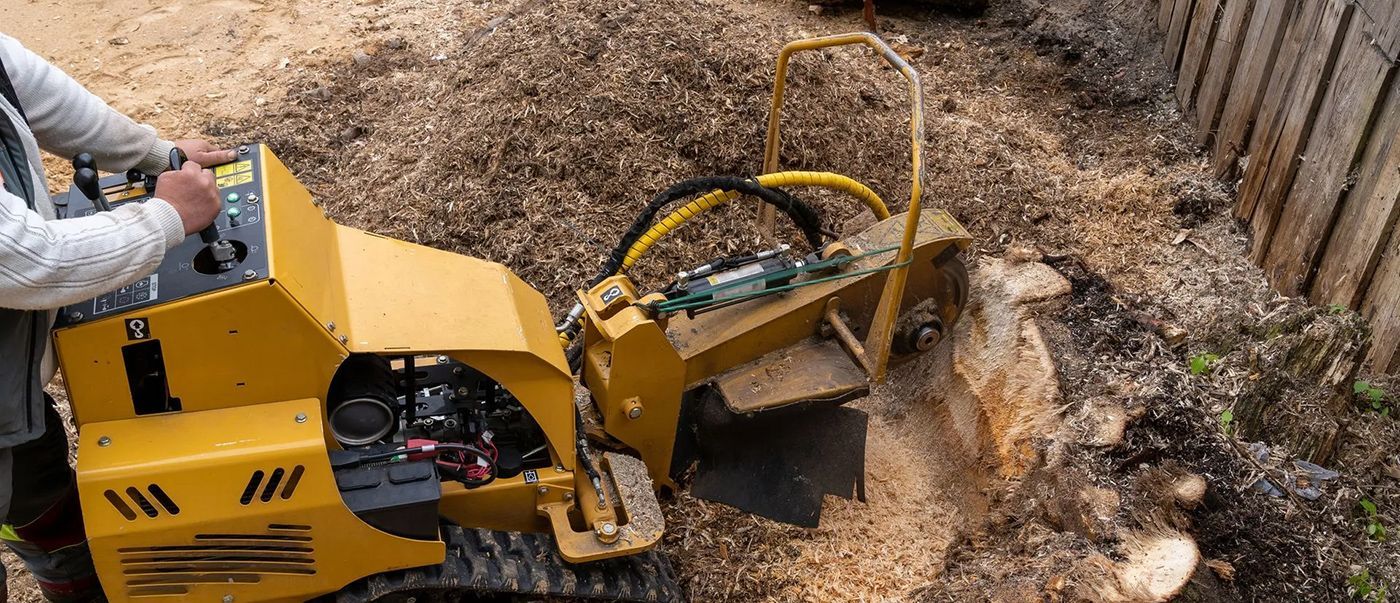
by J P Tree Services
•
26 March 2025
After a tree is cut down, the remaining stump may seem like a harmless reminder of what once stood. However, leaving a stump in your yard can lead to several problems that homeowners may not immediately recognize. At J P Tree Services, we provide expert stump grinding and removal in the greater Dallas area. Here are five reasons to eliminate tree stumps. Prevents Pest Infestations Termites, ants, and other wood-boring insects are naturally drawn to decaying wood. Once they establish themselves in a stump, these pests can spread to nearby healthy trees, plants, and even your home. Removing the stump eliminates a potential insect habitat and reduces the risk of infestations that could cause costly damage. Improves Aesthetic Appeal A tree stump can be an eyesore, disrupting the visual harmony of your landscape. Whether it’s a front yard or backyard, a well-maintained outdoor space enhances curb appeal and property value. By removing the stumps, you create a more polished appearance that complements the rest of your landscaping. Eliminates Safety Hazards Stumps left in the ground pose a significant tripping hazard, especially in areas where children play or guests walk. They can be difficult to spot in overgrown grass, increasing the likelihood of accidents. Also, if you mow your lawn regularly, a hidden stump can damage your mower or other landscaping equipment. Removing the stump eliminates these hazards. Frees Up Usable Space A stump takes up valuable space that could be used for landscaping, gardening, or recreational activities. Whether you want to install a patio or create an open lawn area, a stump can get in the way. By removing it, you can maximize the potential of your outdoor space and make better use of your property. Prevents Unwanted Tree Growth Even after a tree is cut down, its stump may continue to produce new growth. Small shoots can emerge around the stump, leading to the development of unattractive saplings. These new sprouts can drain nutrients from surrounding plants and require continuous cutting to keep them under control. Removing the stump entirely prevents regrowth and ensures that the tree is gone for good. Stump Grinding & Removal in Dallas, TX When you need stump removal in Dallas, TX and the surrounding area, contact J P Tree Services at (945) 235-2029 . Feel free to give us a call to ask for an arborist estimate in Dallas, TX!
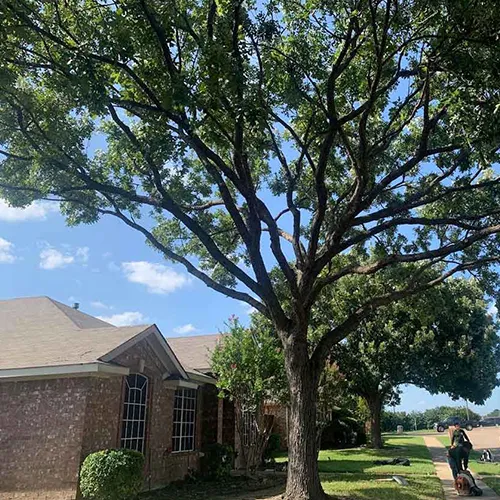
by J P Tree Services
•
27 February 2025
If not properly cared for, trees are more likely to suffer from diseases, pest infestations, and structural issues. Preventing serious health problems in trees requires proactive maintenance and attention. By following these five tips, you can help keep your trees strong and healthy for years to come. Regular Pruning for Strong Growth Pruning is one of the most effective ways to maintain a tree’s health. Removing dead, diseased, and structurally weak branches prevents the spread of infections and reduces the risk of branch failure. Proper pruning encourages healthy growth, improves air circulation, and allows sunlight to reach all parts of the tree. However, improper pruning can cause long-term damage, so it’s best to hire a professional arborist to ensure the job is done correctly. Provide Adequate Water and Mulching Watering trees properly is crucial, especially during hot and dry seasons. Generally, newly planted trees require frequent watering, while mature trees benefit from deep, infrequent watering to encourage deep root growth. Mulching around the base of the tree helps retain soil moisture, regulate temperature, and reduce weed competition. However, it’s important to avoid piling mulch against the trunk, as this can create a breeding ground for pests and diseases. Monitor for Pests and Diseases Pests and diseases can quickly weaken a tree and lead to significant health problems if left untreated. Regularly inspect your trees for signs of trouble, such as discolored leaves, unusual growths, holes in the bark, or visible insects. Early detection is key to preventing widespread damage. If you notice any concerning symptoms, consult an arborist ASAP. Ensure Proper Soil Nutrition Healthy soil is the foundation of a strong tree. Conducting a soil test can help determine nutrient deficiencies and pH imbalances that may affect tree health. Fertilizing as needed can provide essential nutrients, but it’s important not to over-fertilize. Organic compost and soil amendments can also improve soil structure and promote root development. Prevent Physical Damage to the Tree Mechanical injuries from lawnmowers, string trimmers, and construction activities can weaken a tree’s structure and create entry points for pests and diseases. This makes it important to proceed with caution when working on projects around your trees. Being mindful of how you maintain the area around your trees can significantly impact their long-term health. Arborist in Dallas When you need an arborist in Dallas and the surrounding area, contact J P Tree Services at (945) 235-2029 . Feel free to give us a call to request an arborist estimate in Dallas, TX!
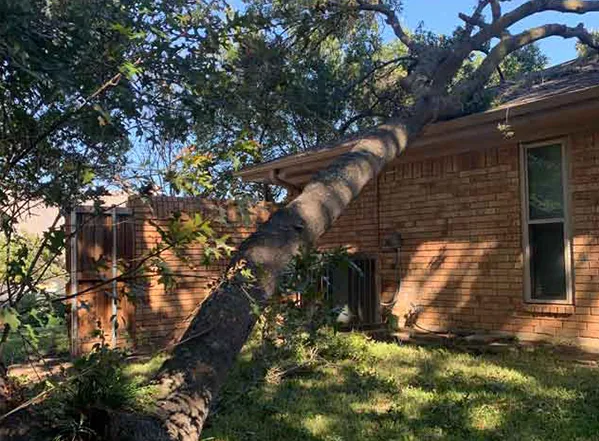
by J P Tree Services
•
26 January 2025
Mature trees add beauty and shade to your property, but when a big tree shows signs of trouble, it could pose a safety risk to people and structures nearby. Recognizing these warning signs early can help prevent accidents and costly damage. At J P Tree Services, we can determine if your big tree is creating a safety risk and then expertly remove it if necessary. Here are five warning signs that your big tree is a safety threat. Splits in the Trunk Large cracks or splits in a tree’s trunk can indicate structural instability. These weaknesses may worsen during storms or high winds, increasing the risk of the tree or large branches falling. If you notice significant cracks, it’s important to have the tree assessed by the arborist. Dead/Dying Branches Dead or dying branches are also dangerous. These branches can break off unexpectedly, potentially causing injury or damage to property. A tree with many dead branches may be experiencing disease, pest infestation, or severe stress, all of which can compromise its health and stability. Leaning A tree that is leaning significantly, especially if the lean has developed recently, may have an unstable root system. An unnatural lean can also result from soil erosion or damage to the roots. This makes the tree more likely to fall and should be addressed promptly. Root Problems The roots are the foundation of a tree, and any issues with them can compromise the tree’s stability. Signs of root problems include heaving soil, fungal growth at the base of the trunk, or exposed roots due to soil erosion. Damaged or diseased roots can weaken the tree’s anchor to the ground, increasing the risk of toppling. Signs of Disease or Pest Infestation Diseases and pests can significantly weaken a tree’s structure. Look for symptoms such as discolored or wilting leaves, unusual growths on the bark, or sawdust-like material at the base of the tree. A diseased or infested tree is more likely to shed branches or collapse, posing a hazard to its surroundings. Tree Removal in Dallas When you need tree removal in Dallas and the surrounding area, contact J P Tree Services at (945) 235-2029 . Feel free to give us a call to ask for an arborist estimate in Dallas, TX!
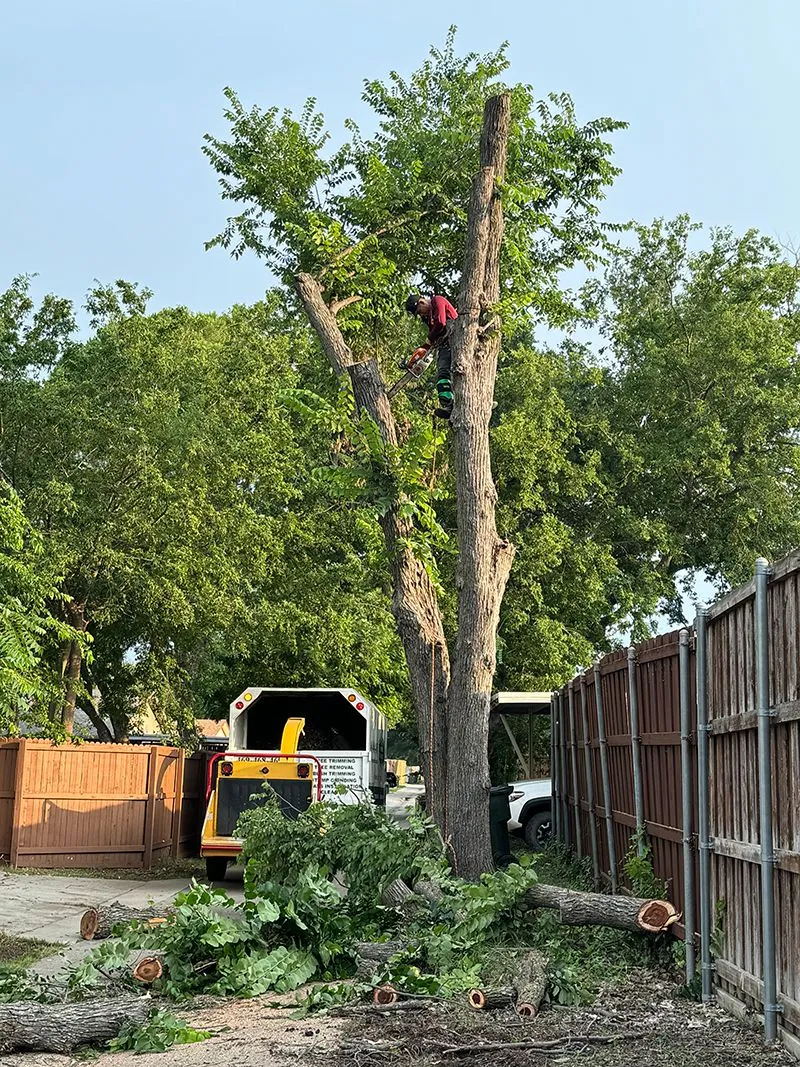
by J P Tree Services
•
26 December 2024
Recognizing the early signs of a tree disease can often save the tree and prevent the problem from spreading to other plants in your yard. However, in other cases, the tree may need to be removed because the disease has decimated the tree’s health, making it susceptible to toppling over. At J P Tree Services, we can identify diseased trees and determine whether they should be safely removed. Here are five signs that may indicate your tree is diseased. Discolored or Spotted Leaves Yellowing, browning, or the appearance of spots may indicate fungal infections or nutrient deficiencies. In some cases, leaves may also develop unusual textures, such as a powdery or sooty surface. When such symptoms are present, it’s important to determine whether the issue is related to a disease like anthracnose or if it’s caused by pests or environmental stressors. Bark Damage and Cankers The bark of a healthy tree should be firm and free of deep cracks or holes. If you notice peeling, splitting, or the presence of sunken areas called cankers, your tree could be suffering from a disease. Cankers can be dangerous as they can weaken the tree's structure and make it more susceptible to further infections or infestations. Bark damage might also allow pathogens to enter, worsening the issue. Unusual Growths or Fungal Presence Fungi growing on or around a tree is often a sign of disease. Mushrooms or unusual lumps on the trunk may indicate internal rot or decay. These growths can weaken the tree’s structural integrity and increase the risk of branches breaking off. If you see fungi, it’s a good idea to have the tree inspected by a professional arborist to determine the extent of the damage. Dead or Dying Branches Dead branches are more than an eyesore—they’re often a sign of a tree in distress. While occasional dead branches can occur naturally, a pattern of consistent dieback may point to diseases such as oak wilt. Poor or Stunted Growth A diseased tree often grows at a much slower rate than its healthy counterparts. You may notice fewer leaves or reduced fruit production. This stunted growth is often caused by root damage, nutrient deficiencies, or systemic infections. Comparing your tree’s growth to similar trees in the area can help you identify if something is amiss. Arborist in Dallas When you need an arborist in Dallas and the surrounding area, contact J P Tree Services at (945) 235-2029 . Feel free to give us a call to request an arborist estimate in Dallas, TX!
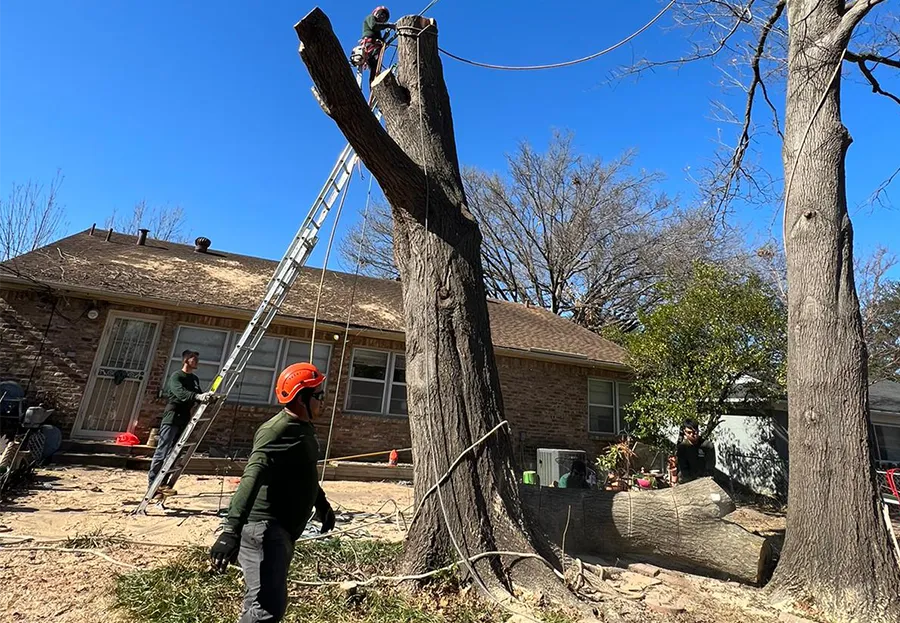
by J P Tree Services
•
21 November 2024
Flourishing trees add beauty and property value, but when trees become unhealthy, they can also pose serious risks. A tree that’s in poor health can become weak, brittle, and prone to falling – putting nearby structures and people in danger. At J P Tree Services, we provide expert tree removal in the greater Dallas area. Here are five signs that a tree on your property may be unhealthy and in need of removal. Dead or Dying Branches If you notice numerous dead or dying branches on your tree, this is a warning sign of poor health. When branches lose their leaves or start to dry up and break easily, they’re more likely to fall, especially in strong winds. A tree with significant branch death likely has an underlying disease or pest issue and may require removal if the condition spreads to other parts of the tree. Fungal Growth at the Base Large fungal growth at the base of a tree is a common sign of internal decay. Fungi feed on decomposing wood, so if you see significant fungal growth, it often means the tree is rotting from the inside out. Decay can compromise a tree's structural integrity, making it more susceptible to falling, even in mild weather. Cracks or Splits in the Trunk Cracks or splits in a tree trunk can indicate severe structural damage. These cracks may form as a result of internal decay, storm damage, or disease, and they can weaken the tree to the point where it becomes unstable. If you notice deep cracks that run along the trunk or near major branches, the tree is likely a safety hazard and may need to be removed before it fails. Leaning or Unstable Appearance A tree that’s leaning significantly or has an unstable appearance might be a candidate for removal. While some trees naturally grow at an angle, a sudden lean or a change in the angle of a tree can be a sign of root damage or weakened support. If the lean is pronounced, it’s often best to remove the tree to prevent potential damage. Visible Pest Infestation Certain pests, like borers and beetles, often target stressed or dying trees. Signs of infestation can include holes in the bark, sawdust-like material around the tree’s base, or visible insects on the bark. A pest-infested tree can spread disease to other trees and eventually succumb to decay. If you see signs of significant pest activity, removal may be necessary to protect other trees on your property. Tree Removal in Dallas When you need tree removal in Dallas and the surrounding area, contact J P Tree Services at (945) 235-2029 . Feel free to give us a call to request an arborist estimate in Dallas, TX!
Estimate Request
Please fill in the form below and we'll have a representative contact you.
Thank you for contacting us.
We will get back to you as soon as possible.
We will get back to you as soon as possible.
Oops, there was an error sending your message.
Please try again later.
Please try again later.
About Us
As a locally owned and operated company, we take pride in helping home and business owners in our community with all of their tree related needs.
© 2025
All Rights Reserved | J Perez Tree Service LLC
